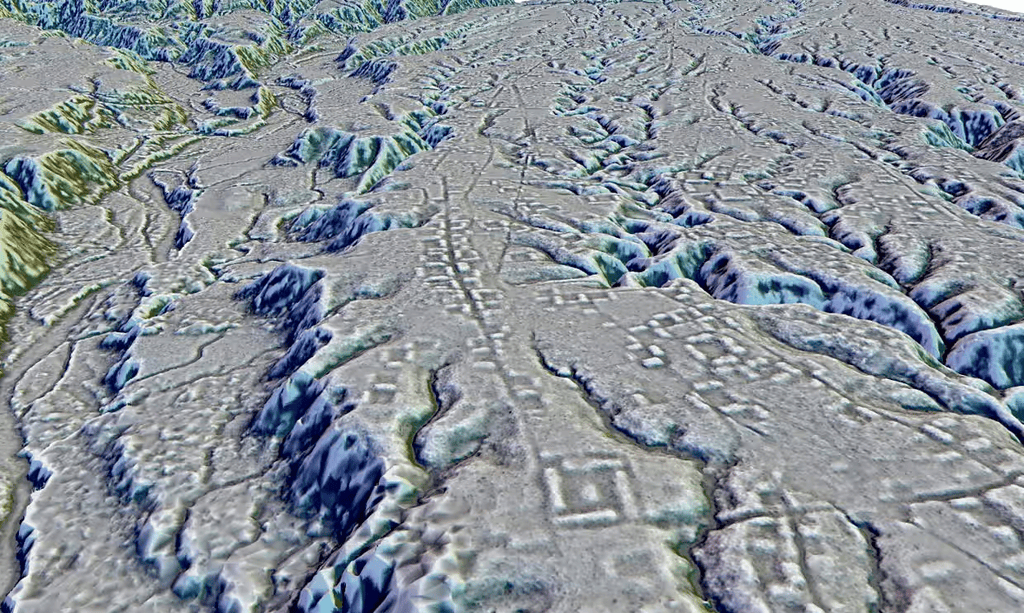
The Amazon can be a pretty difficult place to live in. In fact, it’s so unhospitable that archaeologists used to think large areas of the rainforest were almost largely uninhabited throughout history. But modern research is showing a different story.
It’s not that these places were uninhabited. It’s more that there was so much vegetation we couldn’t really see the signs of settlements. Traces of ancient cultures are still there to be found, but the dense forest canopy shrouds them. Thankfully, Lidar surveys are now enabling us to see these areas in a new light.
Lidar, which is an acronym that stands for Light Detection and Ranging, is a revolutionary technology that has transformed the way archaeologists explore and understand the Amazon. By emitting laser pulses from an aircraft and measuring the time it takes for them to bounce back, LiDAR can penetrate through the thick vegetation, revealing hidden features on the ground below.
This technology generates high-resolution 3D maps of the terrain, uncovering archaeological sites such as ancient settlements, road networks, and agricultural structures, often invisible to traditional survey methods. This is exactly what’s been done in Ecuador, in the Upano Valley.
Some of these structures date from 2,500 years ago, predating the oldest known Amazon settlements by around a thousand years.
“It was a lost valley of cities”

The first signs of settlements in the Upano Valley came in the 1970s. In the 1990s, Stéphen Rostain, an archaeologist with France’s National Center for Scientific Research, began excavations in the region. However, this process was slow and didn’t grant a larger overview of the area.
That once again changed in 2015, when an extensive Lidar campaign was started in the region. The Lidar can virtually “strip” an area of the vegetation, leaving behind only the surface features, indicative of previous civilizations.
Rostain and colleagues knew there would be more features left to be discovered. But even they were surprised to see just how extensive these archaeological features were.
The research team uncovered over 6,000 earthen mounds, on which residential and ceremonial buildings were erected. Large agricultural fields linked with drainage canals surrounded many of these mounds. The network of roads is also stunning. Some of the roads were 10 meters wide (33 feet) and stretched for up to 12 miles (20 km)
“The most notable landscape feature is the complex road system extending over tens of kilometers, connecting the different urban centers, thus creating a regional-scale network. Such extensive early development in the Upper Amazon is comparable to similar Maya urban systems recently highlighted in Mexico and Guatemala,” the researchers write in the study.
Cities as big as ancient London
It’s not clear exactly how many people lived in these settlements, but there would have been at least 10,000 inhabitants at its peak, and possibly even over 30,000. That’s about as big as Roman-era London (Londinium), Britain’s largest city at the time.
The civilization would have needed to be well organized as well. While the Mayans built their large network with stones, people in the Amazonia didn’t have such materials available. Instead, they built with mud — which took a lot more time and labor.

This strongly contradicts the idea that people only lived nomadically in the Amazon and didn’t build that much. Given the period they built in, it also hints at a remarkably sophisticated society.
“This is older than any other site we know in the Amazon. We have a Eurocentric view of civilization, but this shows we have to change our idea about what is culture and civilization,” says Prof Stephen Rostain, director of investigation at the National Centre for Scientific Research in France, who led the research, for the BBC.
All this hints at a complex and advanced society, and one that is so old it contradicts our current understanding of civilizations in the Amazonia. We’re talking about a civilization as complex as the Maya but with a completely different type of infrastructure and land use. These people focused on agriculture, eating mostly maize and sweet potato, and drinking “chicha”, a type of sweet beer — but they also built large-scale monuments and impressive networks.
This is not the first time scientists have found evidence of intricate rainforest societies that predated European contact in the Amazon. Previous research highlighted the existence of such cultures in several different regions of South America. The existence of such large, organized settlements, replete with sophisticated infrastructure and agricultural practices, indicates a level of social complexity and environmental adaptation far beyond what was previously imagined for pre-Columbian Amazonian societies.
The study was published in Science.


